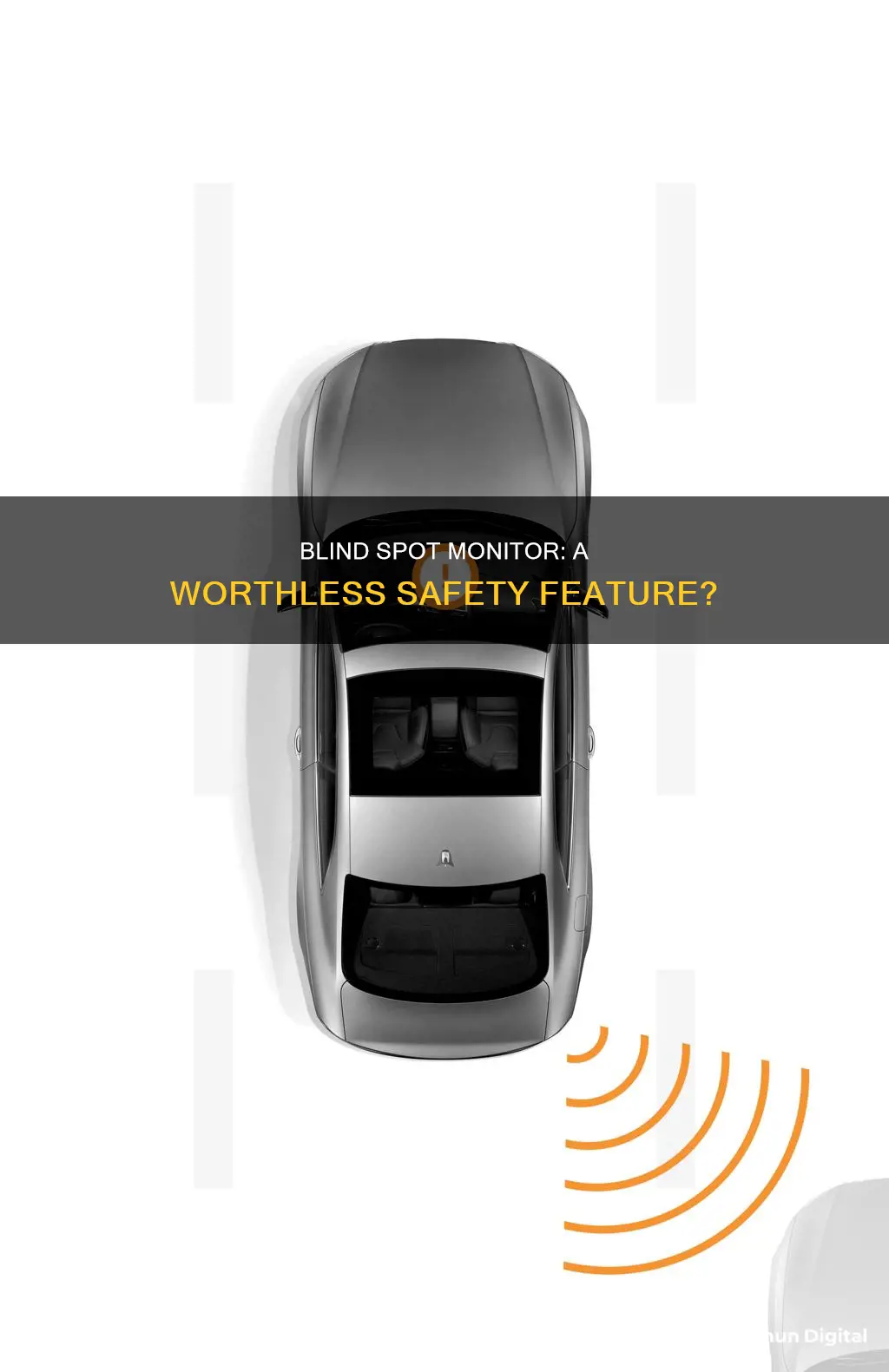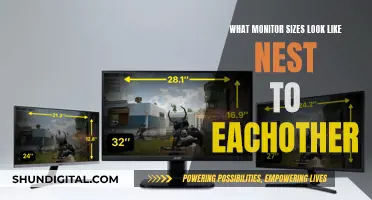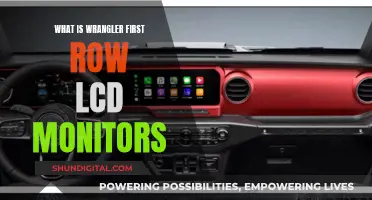
Blind-spot monitoring (BSM) is a feature offered by many automakers to increase safety by alerting the driver to vehicles that may be in their blind spot. While BSM is a useful tool, it is not a perfect solution and has several limitations and drawbacks. For example, BSM may not detect fast-moving vehicles or motorcycles, and it may provide alerts too late for the driver to take action. Additionally, BSM is primarily designed for highway use and may not be as effective in city or urban environments. Therefore, while BSM can be a helpful feature, it should not be relied upon as the sole means of ensuring safety when changing lanes or merging.
| Characteristics | Values |
|---|---|
| Drawbacks | Blind-spot monitoring systems struggle to detect fast-moving vehicles and motorcycles. Alerts may be provided too late for the driver to take action. |
| The usefulness of blind-spot monitoring may be limited on city streets and byways. | |
| The system may be affected by outside circumstances such as bright lights. | |
| Most blind-spot monitoring systems only provide audio cues when the turn signal is activated. | |
| The sensors in the rear bumper and the camera lenses in the side-view mirrors must be kept clean and clear of all obstructions. | |
| Blind-spot monitoring systems are not a substitute for safe driving practices and cannot judge on their own when it is safe to change lanes. | |
| Benefits | Blind-spot monitoring systems can prevent crashes and increase response time. |
| They can assist drivers of larger vehicles. | |
| They can increase driving awareness. | |
| They can make drivers feel safer and more confident. |
What You'll Learn

Blind-spot monitoring systems are not very effective at detecting fast-moving vehicles
Blind-spot monitoring systems are designed to detect vehicles in adjacent lanes and alert the driver to potential hazards. While these systems can be valuable in preventing collisions, they have limitations and are not a substitute for a driver's own vigilance in checking blind spots. One significant drawback is their ineffectiveness in detecting fast-moving vehicles.
A study by the American Automobile Association (AAA) found that blind-spot monitoring systems often struggled to detect fast-moving vehicles and provide timely alerts to the driver. This delay in notification can be problematic, particularly when merging onto busy highways, as it reduces the driver's ability to take evasive action and avoid a potential collision. The study highlighted that alerts were provided too late for effective accident prevention, demonstrating the limitations of these systems in high-speed scenarios.
The challenge of detecting fast-moving vehicles is inherent to the design and functionality of blind-spot monitoring systems. The sensors used in these systems, typically mounted on side mirrors or the rear bumper, may not capture rapidly approaching vehicles effectively. The speed of the approaching vehicle can outpace the system's ability to detect and alert the driver, resulting in delayed notifications. This delay can be a critical factor in high-speed driving situations, where split seconds can make a significant difference in collision avoidance.
Additionally, the effectiveness of blind-spot monitoring systems is influenced by external factors such as lighting conditions and the placement of sensors. Bright lights, for example, can impact the driver's ability to notice visual signals from the system. Furthermore, the performance of these systems can vary depending on the make and model of the car, with some systems being more effective than others in detecting fast-moving vehicles.
While blind-spot monitoring systems offer some benefits, their limitations in detecting fast-moving vehicles underscore the importance of driver vigilance. Drivers should not solely rely on these systems but instead use them as a supplementary tool. It is crucial for drivers to actively check their blind spots, especially when merging onto busy roads, to ensure they have a comprehensive understanding of their surroundings and can react appropriately to potential hazards.
Monitoring Memory Usage: A Guide for SQL Server 2008
You may want to see also

They are also not very good at detecting motorcycles
Blind-spot monitoring (BSM) systems are designed to detect vehicles in a car's adjacent lanes, warning the driver of potential dangers. However, these systems have limitations and are not a substitute for safe driving practices. One significant limitation is their difficulty in detecting motorcycles, which can have devastating consequences.
Motorcycles, with their smaller profiles, are more challenging for BSM systems to detect than passenger vehicles. According to the American Automobile Association (AAA), motorcycles were detected significantly later (26% later) than cars, and sometimes not at all, especially when travelling at higher speeds. This delay or failure to detect can mean the difference between a safe manoeuvre and a collision.
The vulnerability of motorcyclists in any collision is heightened by the open nature of their vehicles. Therefore, it is imperative that BSM systems effectively detect motorcycles to ensure their safety. However, the current limitations of these systems mean that motorcyclists cannot solely rely on BSM-equipped cars to prevent accidents.
To address this issue, motorcycle manufacturers have introduced blind-spot detection systems specifically designed for motorcycles. These systems use microwave radar technology to detect vehicles in adjacent lanes and alert the rider through visual and audio cues. This technology helps riders change lanes safely and reduces the stress of constantly monitoring their surroundings.
While BSM systems in cars can provide some assistance in detecting motorcycles, their limitations underscore the importance of safe driving practices. Drivers should not solely depend on technology but remain vigilant and practice defensive driving techniques to ensure the safety of everyone on the road, including motorcyclists.
Troubleshooting the 'Out of Range' Issue on ASUS Monitors
You may want to see also

The systems are primarily for highway use and highway speeds
Blind-spot monitoring (BSM) is a safety feature designed to alert drivers to vehicles in their blind spots. It is particularly useful for larger vehicles with bigger blind spots. The system uses sensors and sometimes cameras to detect vehicles approaching in adjacent lanes, and alerts the driver with a visual or audible warning. Some BSM systems also offer haptic alerts, such as vibrations through the steering wheel or seat.
BSM is generally designed for highway use and speeds. While it can be a valuable safety feature, it is not a substitute for safe driving practices and checking mirrors and blind spots. BSM systems are known to have some limitations, such as struggling to detect fast-moving vehicles or motorcycles, and may not always provide alerts in time for the driver to take action. They also require regular cleaning and maintenance of the sensors and cameras to function effectively.
BSM is now widely available as a standard feature or optional upgrade across a range of vehicles, from subcompact cars to large trucks. It is important for drivers to understand the limitations of BSM and use it as a supplementary tool to their own safe driving practices.
BMW Packages: Which One Offers Blind Spot Monitoring?
You may want to see also

They are not a substitute for safe driving practices
Blind-spot monitoring (BSM) is a useful feature to have in your car, but it is not a substitute for safe driving practices. While BSM can help prevent accidents, it is not foolproof and should be used in conjunction with other safe driving practices.
BSM uses sensors and sometimes cameras to detect vehicles in a driver's blind spot and provide an alert, usually in the form of a visual or audible warning. However, it is important to note that BSM systems have limitations and may not always detect fast-moving vehicles or motorcycles. Additionally, BSM systems typically only function at speeds greater than 20 miles per hour, and their effectiveness can be impacted by factors such as bright lights or obstructions on the sensors and cameras.
Therefore, it is crucial for drivers to remain vigilant and continue to practice safe driving habits even when their vehicle is equipped with BSM. This includes properly adjusting mirrors, regularly checking blind spots, using turn signals, and watching mirrors and looking over shoulders when changing lanes. While BSM can provide an extra layer of safety, it should not be solely relied upon to prevent accidents.
Furthermore, BSM systems require proper care and maintenance to function effectively. Sensors and cameras must be kept clean and free of obstructions such as snow, ice, mud, dirt, or condensation. Failure to do so can result in the system not working correctly, which could lead to potential hazards on the road.
In conclusion, while blind-spot monitoring can be a valuable tool for drivers, it should not be seen as a replacement for safe driving practices. By using BSM in conjunction with safe driving habits, drivers can maximize their safety on the road and minimize the risk of accidents.
Backlight Basics: Understanding LED's Role in LCD Monitors
You may want to see also

They are not very useful on city streets
Blind-spot monitoring (BSM) is a useful feature for drivers, providing an added safety measure to compensate for human error. However, it is important to note that BSM has its limitations, especially when it comes to city street driving.
Firstly, BSM systems are primarily designed for highway use and higher speeds. They typically become operational at speeds greater than 20 miles per hour, with some systems activating at speeds above 35 miles per hour. This means that BSM may not be as effective on city streets, where traffic is often slower and more congested. In such scenarios, drivers need to be aware of their surroundings at all times and make quick decisions, which may not align with the speed and responsiveness of BSM systems.
Additionally, BSM systems are designed to detect vehicles moving at similar speeds to the driver's car. They may not be able to detect vehicles or objects moving significantly faster, such as motorcycles or cyclists, which are common on city streets. This limitation can create a false sense of security for drivers, as they may assume the absence of a warning means it is safe to change lanes or merge, when in reality, there could be a faster-moving object in their blind spot.
Furthermore, BSM systems rely on sensors and cameras that must be kept clean and unobstructed. In city driving, where there is often more debris, dirt, and condensation, these sensors and cameras can become blocked, reducing the effectiveness of the system. Regular maintenance and cleaning are necessary to ensure the proper functioning of BSM, which can be inconvenient and easily overlooked.
While BSM can provide added peace of mind and assist with lane changes, it should not be solely relied upon in city street driving. Drivers should still physically check their mirrors, look over their shoulders, and use their turn signals when changing lanes. Good driving habits, combined with the assistance of BSM, can help improve safety on city streets. However, it is essential to understand the limitations of the technology and not become overly dependent on it, especially in urban driving conditions.
Understanding Monitor Quality: Finding Your SRGB
You may want to see also
Frequently asked questions
Blind-spot monitoring is not worthless, it is a useful tool for keeping safe and preventing crashes.
Blind-spot monitoring uses sensors and sometimes cameras to detect vehicles in a driver's blind spot. When a vehicle is detected, the system alerts the driver with an audible or visual warning. More advanced systems may also include haptic feedback, such as vibration through the steering wheel or seat.
Blind-spot monitoring increases driving awareness, assists drivers of larger vehicles, prevents crashes, and increases response time. It can also provide a sense of added safety and confidence for both the driver and passengers.
While blind-spot monitoring is a valuable safety feature, it is not perfect. One of the main drawbacks is that it may struggle to detect fast-moving vehicles or motorcycles, providing alerts too late for the driver to take action. Additionally, it is primarily designed for highway use and may be less effective in city driving. It is also important to note that blind-spot monitoring should be used as an aid and not a replacement for safe driving practices, such as checking mirrors and using turn signals.







